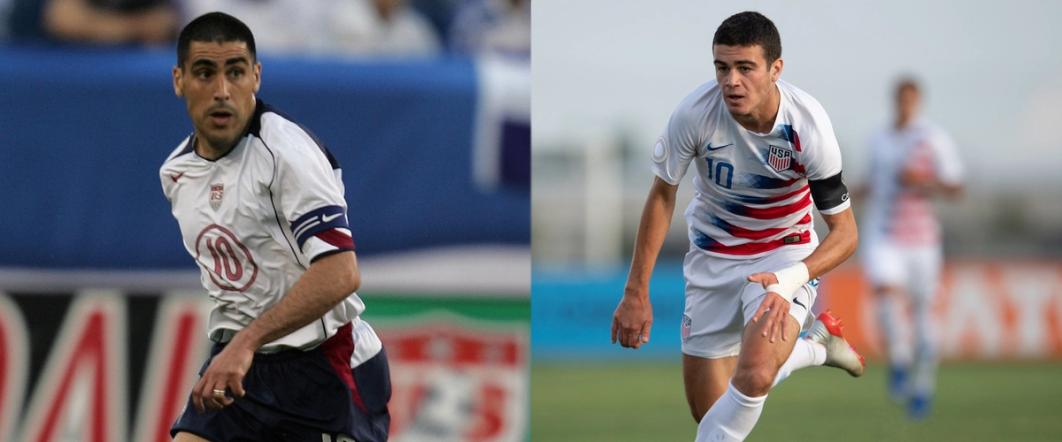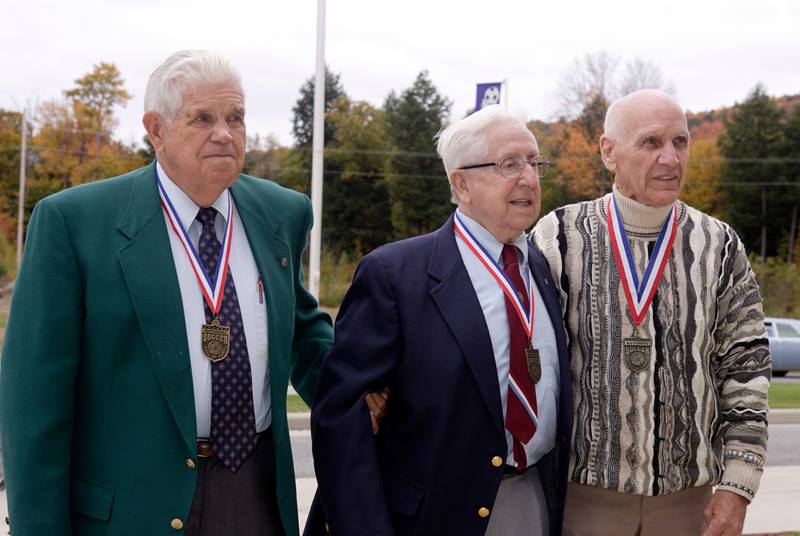Father's Day is a special occasion for many reasons. We honor the men who helped us grow up and with our mothers, set us on the proper moral path.
Some of us wanted to be just like our dads and some of us were fortunate enough to accomplish that.
In soccer, there have been numerous father-and-son and father-and-daughter combinations, mostly on professional club teams.
While quite rare at the national team level, the USMNT has seven father-son acts.
The originals: The Browns
Not only were James and George Brown the first father-son combination in USMNT history, they also were the first and only father and son tandem to be inducted into the National Soccer Hall of Fame.
James (pictured below), who was born in Kilmarnock Scotland, played three games as the youngest player (21) for the United States in the very first World Cup in Uruguay in 1930. He scored the Americans' lone goal in its 6-1 semifinal loss to Argentina. In his fourth and final appearance for the U.S., James started and played the full 90 minutes in a 4-3 friendly loss to Brazil just after the competition.
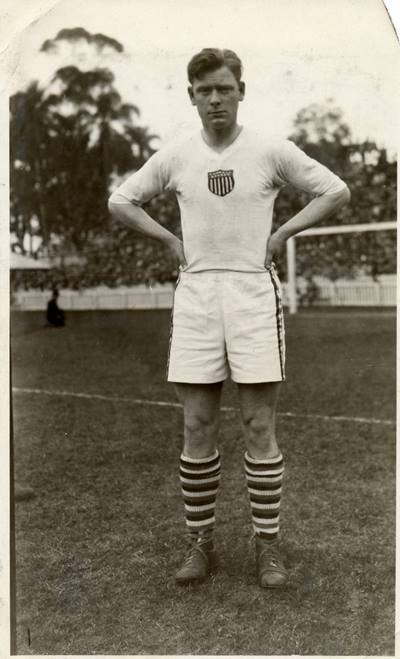
In the first part of his career, James played for seven teams in the New York metropolitan area. The list included the Bayonne Rovers, Newark Skeeters, New York Nationals, New York Giants, New York Soccer Club, Brooklyn Wanderers and Newark Americans. Two years after the World Cup, he journeyed across the pond to play for Manchester United, Brentford, Tottenham Hotspur, Guildford City and Clyde.
He was inducted into the National Soccer Hall of Fame in 1986, and died in 1994.
George, a forward, made one appearance for the national team in a 6-0 loss to Mexico in Mexico City in a World Cup qualifier on April 7, 1957. He does have an international medal in his collection, a bronze after the USA finished a surprising third at the 1959 Pan-American Games in Chicago.
Overcoming a knee injury that slowed him down in his early 20s, George performed for the powerhouse N.Y. German-Hungarians in the German-American Soccer League (Cosmopolitan Soccer League), and was named league MVP in 1953. He also played for the Polish Eagles (American Soccer League) and wound up as the league-leading scorer in 1956-57.
He was inducted into the Hall in 1995.
George served on the National Soccer Hall of Fame's Board of Directors from 2000-2008 when it was located in Oneonta, N.Y. His wife Peggy was archive manager.
Making history 22 years apart: The Macas
Even before he could walk, Alain Maca was destined to make soccer history in the United States. When Maca was only four months old, his father Joe Maca played for the U.S. side that shocked England in an amazing 1-0 upset in the 1950 World Cup.
"It was like the Yankees losing to an amateur team from Massapequa, L.I.," Joe said in 1980.
When Joe brought 19-year-old Alain back to his native Belgium for the first time, the nation’s largest newspaper, Le Soir, devoted its entire back page to the World Cup hero with a story and photos. “Joe Maca is back,” the headlines said.
“He was a hero,” Alain said.
After the game, the English press complained about the field ("narrow, rutted and stony," one writer reported), and about the three non-citizens who played for the U.S. -- Joe Gaetjens (Haiti), who scored the lone goal, right halfback Ed McIllveny [Scottish citizen] and Maca. They were residents of the U.S.
"We never should have played," Joe said. "At that time, they [FIFA] didn't ask questions. Now, in order to play for a national team you have to be full-fledged citizens. If we hadn't beaten England, no one would have said anything."
He made 153 appearances for Royal Cercle Sportif La Forestoise (Belgium) from 1939-47 and played but three times for the USMNT, all in the 1950 World Cup. Joe (top row, second from left below), who became a U.S. citizen in 1957, was inducted into the National Soccer Hall of Fame in 1976. He passed away at 61 in 1982.
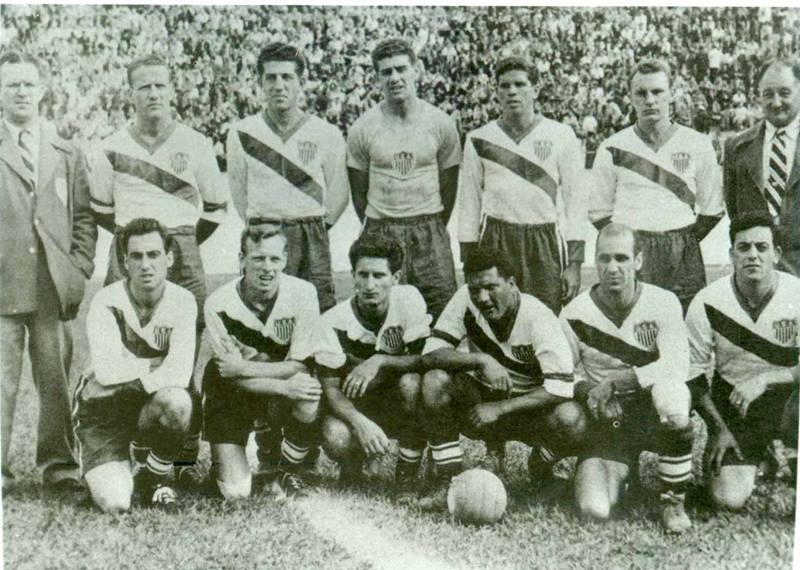
Alain made some history of his own. After an outstanding career at Brockport State (twice an All-American), the Miami Gatos made him the first draft choice in North American Soccer League history on Feb. 9, 1972.
“It’s flattering to be the No. 1 pick,” he said. “It probably means more now than it did then.”
Alain played 11 games for Miami that season, before moving onto the Baltimore Bays and Washington Diplomats. He finished his pro career with the New York Apollo (1978-79).
In 1973, Alain represented the USA for the first time in a 1-0 victory against Bermuda, the first of five international appearances.
The most Alain earned in the NASL was $150 a week. He made more money playing in the German-American Soccer League. “That was more fun to play in than the NASL,” he said. “You would play in these small stadiums. The fans were intense. There was a lot of betting going on. I made more money in that league that I did in the North American Soccer League because you got paid cash.”
He wound up making a great impact off the pitch, working at KLM and eventually becoming president of JFK Airport Terminal 4 before retiring several years ago.
Almost father like son: The Keoughs
Ty Keough seemed destined to play in the Summer Olympics. His father, the legendary Harry Keough, returned from the Melbourne Games in 1956 with a present for his yet-to-be-born son: a stuffed Koala bear.
Harry, a member of the U.S. team that pulled off that 1950 World Cup upset, captained the Americans at the 1952 and 1956 Summer Games.
"I can remember as young as five or six years old looking at my Dad’s Olympic memorabilia from Helsinki ’52 and Melbourne ’56," Ty said. "Obviously, I wanted to grow up someday to be like my Dad, and the dream of marching in the Olympic Opening Ceremonies for the USA like he did was a part of those visions."
It looked like Ty was going to emulate his Dad when the USA qualified for the 1980 Olympic Games, but he and his teammates’ hopes were dashed by the boycott of the Moscow Games after the Soviet Union's invasion of Afghanistan.
"So, it was a bitter disappointment to not be allowed to go to Moscow," Ty told this writer years ago.
A member of the National Soccer Hall of Fame, Harry (pictured left below) played at right fullback in 1950.
Hall of Fame members Harry Keough, Ray Kraft, and John Souza are about to be introduced at the start of the 2004 Induction Ceremony on Monday October 11, 2004 at the National Soccer Hall of Fame and Museum, Oneonta, NY.
"I realized the magnitude at the time. I came up to Frank Wallace and said, 'Boy, do I feel sorry for these guys,' " he said after the final whistle. "I realized they never would be able to explain or figure out how we beat them. I realized that this game would be famous 30 or 50 years from now."
Harry, who played 19 times for the USA when international games were rare, also performed for St. Louis perennial powerhouse St. Louis Kutis S.C., helping the club to several Amateur Cup titles and to the double (with the Lamar Hunt U.S. Open Cup) in 1957. He coached the St. Louis University men to five NCAA championships.
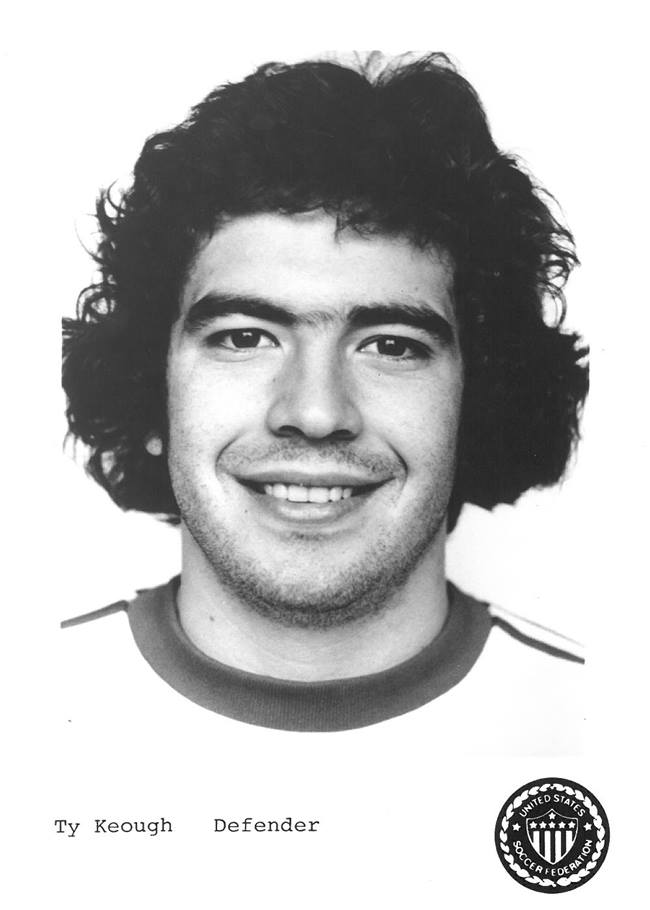
Ty (pictured above) forged a nine-year career, performing for the Cincinnati Kids, St. Louis Steamers and Kansas City Comets (Major Indoor Soccer League) and San Diego Sockers (NASL).
He earned eight caps, making his first appearance in a 3-1 defeat to the Soviet Union on Feb. 3, 1979.
After retiring, Ty coached the Washington University to a 136–47–17 mark over the next 11 years. He became a soccer commentator, covering four World Cups for TNT, ESPN and ABC from 1990-2002.
In his father's footsteps: The Twellmans
Most of the soccer world probably knows Taylor Twellman as an ESPN commentator, but he once was a scoring terror. He found the net 101 times in 174 appearances for the New England Revolution from 2002-2010 and six times in 30 matches for the USMNT from 2002-08 before concussion issues forced his retirement at the age of 30 in 2010.
Taylor credited his parents, particularly his father, Tim (pictured below), for instilling pride in a work ethic, some common sense and balance. Tim never tried to over-coach his son, taking a pragmatic approach that allowed Taylor to thrive.
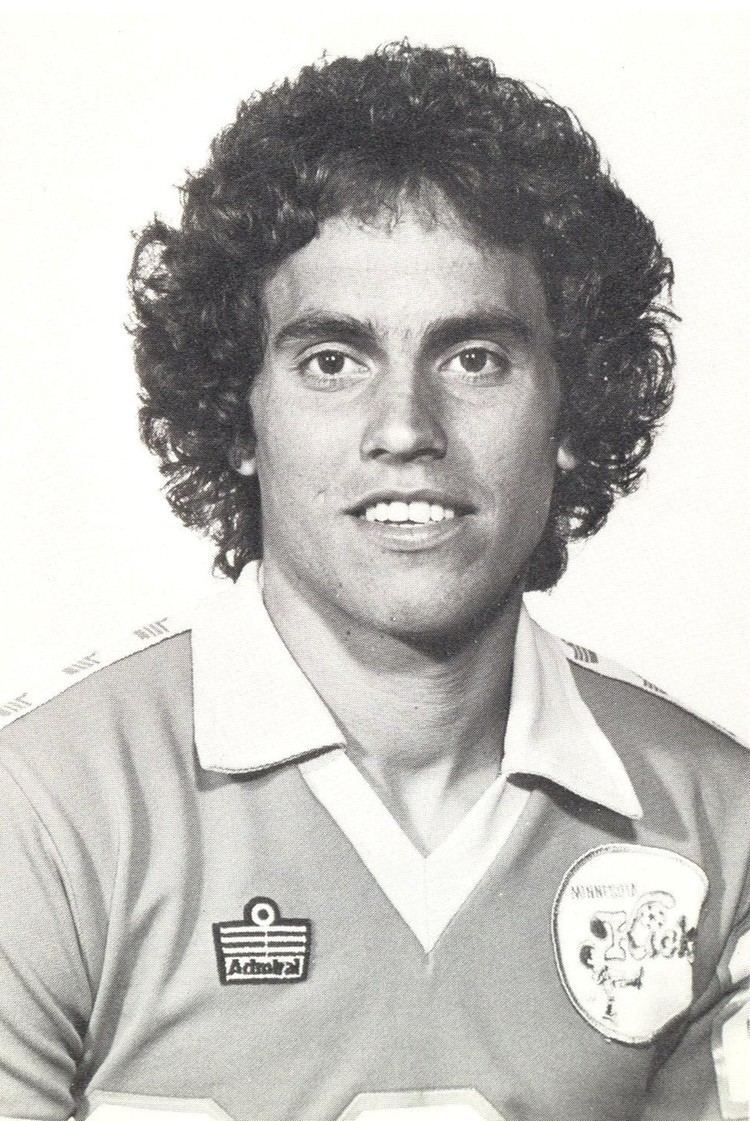
A versatile player, Tim had been through it all before, playing soccer and baseball at Southern Illinois University Edwardsville before embarking on a professional career. He played outdoor soccer for the Minnesota Kicks, Tulsa Roughnecks and Chicago Sting from 1977-83 and indoors for the Kicks, Sting and Kansas City Comets from 1979-86. To make ends meet, many players competed in both leagues at the same time.
Tim made his lone U.S. National Team appearance as a defender in a 2-1 win against Trinidad & Tobago on March 21, 1982.
"My motto growing up with my dad was you're only as a good as your last game," Taylor said years ago. "That's all it is. You move on."
Taylor remembered what transpired in the car with his family after a high school soccer awards banquet. The question from his parents was: “What are you goals for next year?”
“It was never individual,” Taylor told me years ago. “My dad never said, ‘You've got to score 15 goals or 20 goals. What part of your game you need to improve on?’ We still do that now. After this final on Sunday, I'll go home for Thanksgiving and my, dad and brother will sit there and have a beer and all three of us will say. They'll say, 'This is what I think.' "
Taylor (pictured below) didn't play youth soccer until he was 10 years old.
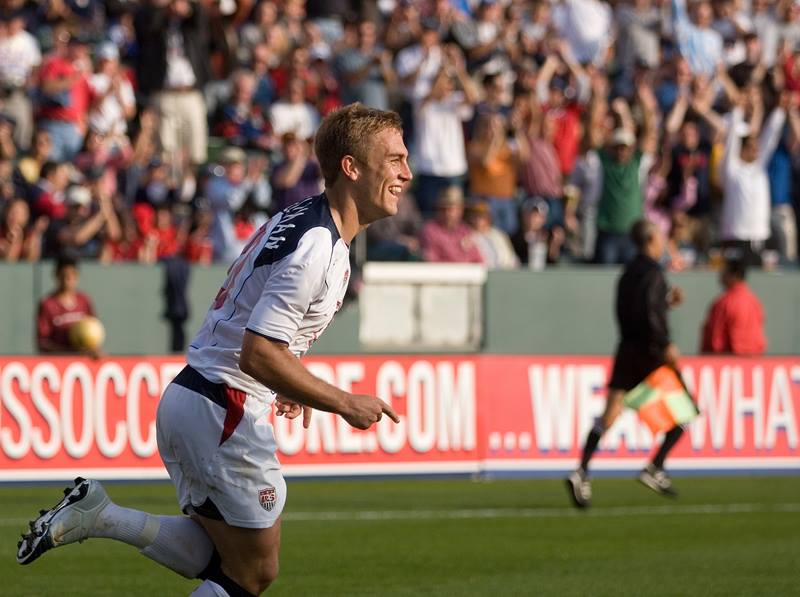
"The only thing we did as a family, my wife and I, was try to keep him from falling into that crazy youth sports system where the coach is more worried if they're winning instead of the kids," Tim said. "We really dictated when Taylor would play and all that. Not always making everybody happy, that's for sure.”
Taylor also had two uncles who saw some NASL action. His younger brother James played with the San Jose Earthquakes in 2005. His sister Alexandra Twellman Morris was a standout for the St. Louis University women's team. His grandfather, Jim Delsing, played 10 major league baseball seasons (he might be best remembered as the pinch runner for 3-7-tall Eddie Gaedel in 1951) and has another uncle, Jay Delsing, who was a pro golfer.
The family operates Twellman Soccer in St. Louis and Boston, holding summer camps, clinics and training for youth players.
The family business: The Gyaus
No soccer family in the U.S. can claim what the Gyaus have achieved: three generations of national team players. OK, one did not play for the U.S. National Team, but that's still pretty impressive.
Let's start with grandfather Joe, perhaps better known to some American fans as Nana.
Nana was a swift, skilled and talented winger for the Ghanaian national side when not competing for Real Republicans and B/A United. He helped Ghana capture the 1963 and 1965 African Cup of Nations titles. He also scored in a 3-2 victory against Japan in the 1964 Tokyo Olympics.
He pulled off a rare triple, playing for three Washington NASL clubs -- the Whips (1968), Darts (1970) and Diplomats (1984). He also performed for the Baltimore Bays (ASL). Nana’s best season was for the 1970 NASL runners-up (five goals and eight assists in 19 games). Gyau passed away at 78 on May 14, 2015.
"Without him, none of this is possible," his son Phillip told the Washington Post in 2015. "He's the one who taught us to work hard. We learned from him. He was a good man."
Phillip, a forward, graduated from Howard University and has coached the Bison men since 2014. He made six international appearances, including a 2-1 World Cup qualifying win against Guatemala on June 17, 1989. He played for the Diplomats, Maryland Bays, Tampa Bay Rowdies, Colorado Foxes, Los Angeles Salsa and Montreal Impact outdoors and Baltimore Blast and Washington Warthogs indoors. Gyau captained the U.S. Beach Soccer National Team for nine years and coached it for six years.
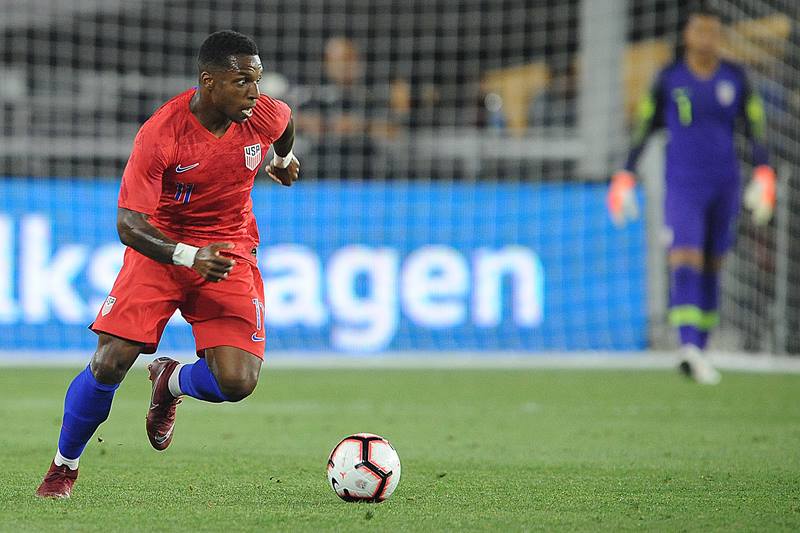
And then there's the third generation: 27-year-old Joe (pictured above), a winger for FC Cincinnati (Major League Soccer). Joe started his professional career in Germany with Hoffenheim. After being loaned to FC St. Pauli, he played for Borussia Dortmund, Sonnenhof Großaspach and Duisburg. Joe has competed for the U-17, U-20 and U-23 sides before making his full international debut in a 1-0 win against the Czech Republic on Sept. 3, 2014. He has made three appearances for the USMNT.
Phillip said that Joe's style of play and physique reminded him of Nana. "It's his grandfather out there," he told the Post.
Phillip’s 21-year-old daughter Mia represented the USA on the women's Under-17, U-18 and U-20 National Teams. She is a senior midfielder-defender at Duke University.
The latest father and son act: The Reynas
The soccer force runs strong in Gio Reyna because both of his parents performed for their respective national teams.
His father is Claudio Reyna, former captain of the USMNT at the 2002 and 2006 World Cups who played for Bayer Leverkusen and Wolfsburg (Germany), Rangers (Scotland) and Sunderland and Manchester City (England) during his prime. A member of the National Soccer Hal of Fame, Claudio made 112 international appearances.
His mother is the former Danielle Egan, who played on four NCAA Division I championship teams at the University of North Carolina before performing six times for the U.S. Women's National Team. Like many Soccer Moms, Danielle drove her son to training on three-hour roundtrips several days a week from their suburban Westchester home.
"There's been a soccer ball at my feet since I can walk," Gio said to ussoccer.com last year. "I'm sure my first word was ball. I guess it was just meant to be. It's in my DNA and in my family's DNA. So, they taught me a lot. On the field, [and] of course way more off the field, which I am very grateful. The opportunities and all the love they've given me in the past few years to really to give me the opportunity to reach my peak was something special. So, I am really thankful for them and really grateful and blessed to have them in my life."
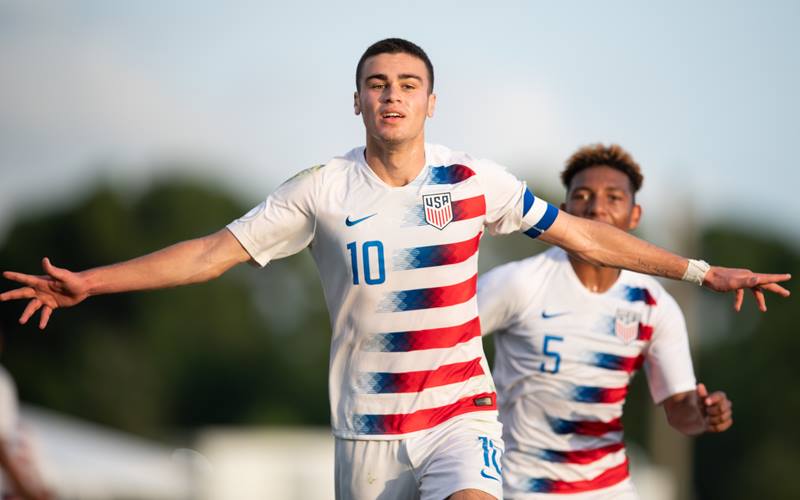
Gio, 17, hasn't been capped just yet, but U.S. head coach Gregg Berhalter said he was going to be called in for the team’s international friendlies against the Netherlands (March 26) and Wales (March 30) before the COVID-19 pandemic. The 17-year-old earned his first Bundesliga start and registered his first assist for Borussia Dortmund on Saturday.
"Soccer has been always my No. 1 passion, above everything," he said. "It's how much it's in my blood, how much I love the sport, how it's in my family. I want to make everybody proud and show everybody what I can do and help U.S. Soccer grow. I just love the sport. It's always been there for me."
Coach and player: The Bradleys
While current LAFC head coach Bob Bradley never played for the USMNT, he did direct it for 80 games, from 2007-2011, including a Round of 16 finish in the 2010 World Cup. His son, Michael, has been capped 151 times and has captained the team on 48 occasions.
When he coached his son on the MetroStars from 2004-05, Bob shied away from talking about Michael on a personal basis.
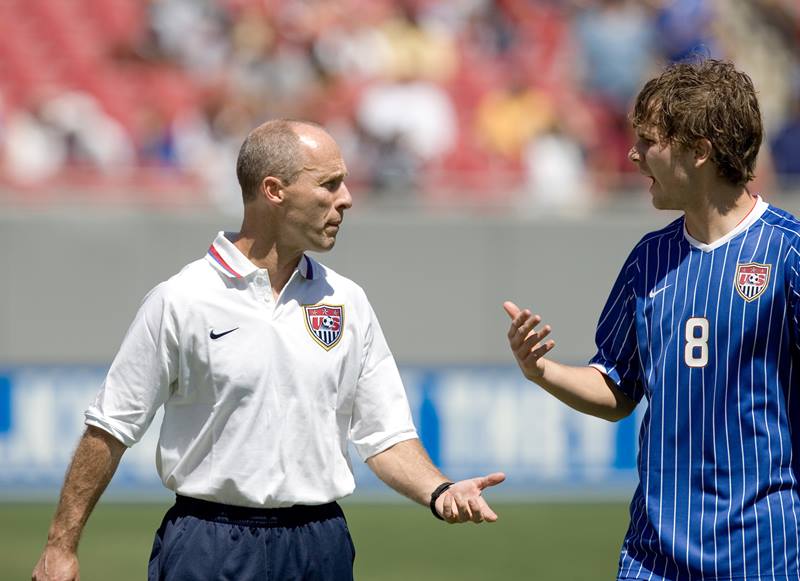
Having moved to Heerenveen following the 2005 MLS season, 19-year-old Michael was added as a training camp player to the group preparing for the 2006 World Cup A week before making his first international appearance (in a 2-0 win against Venezuela in Cleveland on May 26, 2006), yours truly asked Bob about Michael: “I am happy for him. To go to a club in Europe and to establish yourself very quickly, earn the respect of the coaches and your teammates, so that you’re playing and starting in the most important games of the season, that says a lot.”
Now 32, Michael is one of the most well-traveled American players of all-time, playing for Heerenveen (Netherlands), Borussia Mönchengladbach (Germany), Aston Villa (England), and Chievo and Roma (Italy) before joining Toronto FC in 2014 where he helped the club to the 2017 MLS Cup and Supporters Shield, as well as three Canadian Championships.
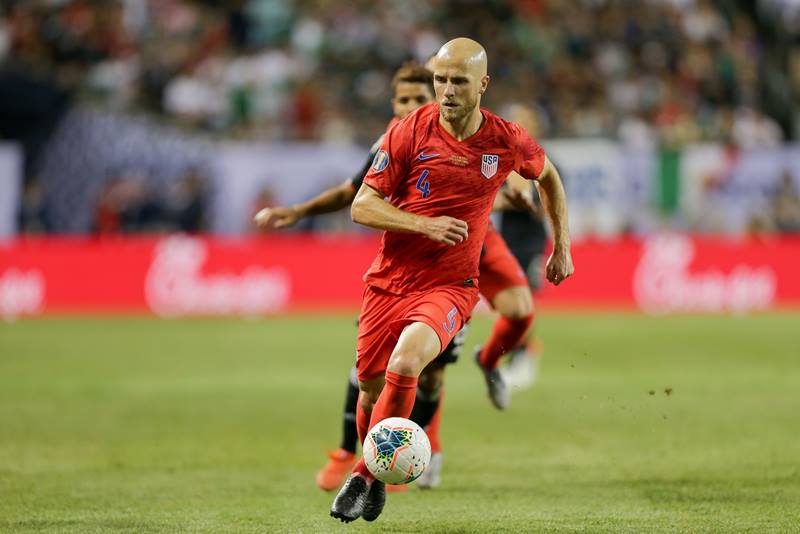
As an American coach, Bob is also a pioneer of sorts, taking on a number of challenging management jobs since his tenure with the USMNT. During the 2014 World Cup cycle, the elder Bradley led Egypt to the brink of qualification for Brazil and three years later, just missed out on seeing French Ligue 2 side Le Havre promoted to the top-flight. Bradley also has led Stabaek in Norway, and in 2016, became the first American to coach in the English Premier League with Swansea City. Today, he’s the head coach of LAFC, whom he led to the Supporters Shield in 2019.
“I have three children and I have to say that I’m proud of all my kids,” Bob said in the past. “I have a great family and I’m a lucky man.”






